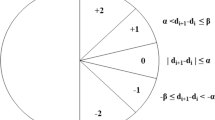Conclusions
The experience of developing and introducing a computer information diagnostic system for monitoring the safety of hydraulic structures at the Volga-Lenin hydrostation showed that the new technology and computing machinery make possible a fundamental change in the established practice of on-site observations and have imparted to them functions of a key link in the process of routine monitoring of the state of structures and safe operation of the hydro development. This factor has special significance for structures that have been operating for decades and naturally acquired an increased hazard and vulnerability to the effect of the environment and aging processes of materials, structural members, equipment, and monitoring and measuring equipment. A change to computer technology of monitoring the safety of structures of hydrostations is justified both under conditions of the continuing operation of MME installed earlier without the possibility of its automatic polling and under conditions of replacing the equipment with newer measuring tools substantially increasing the efficiency of monitoring the state of structures.
Similar content being viewed by others
Additional information
Translated from Gidrotekhnicheskoe Stroitel'stvo, No. 9, pp. 25–30, September, 1996.
Rights and permissions
About this article
Cite this article
Romanov, A.A., Radkevich, D.B., Fradkin, B.V. et al. Computer diagnostic system for monitoring the state of structures at the Volga-Lenin hydroelectric station. Hydrotechnical Construction 30, 539–544 (1996). https://doi.org/10.1007/BF02447456
Issue Date:
DOI: https://doi.org/10.1007/BF02447456




